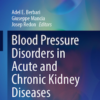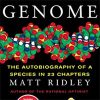Admission Hemoglobin Levels Are Associated With Functional Outcome in Spontaneous Intracerebral Hemorrhage
journals.lww.comHigher hemoglobin levels are associated with better outcome in intracerebral hemorrhage. Further research is needed to evaluate admission hemoglobin levels as both a therapeutic target and predictor of outcome.
Our exposure of interest was admission hemoglobin levels and the primary outcome was 3-month postintracerebral hemorrhage-dichotomized modified Rankin Scale (0–3 vs 4–6). Intermediate outcomes were admission hematoma volume and hematoma expansion defined as 6 mL or 33% increase in hemorrhage size on repeat CT.
A total of 4,172 intracerebral hemorrhage patients were included in the study (mean age 63 [sd = 14]; female sex 1,668 [40%]).
Each additional g/dL of admission hemoglobin was associated with 14% (odds ratio, 0.86; 95% CI, 0.82–0.91) and 7% (odds ratio, 0.93; 95% CI, 0.88–0.98) reductions in the risk of poor outcome in unadjusted and adjusted analyses, respectively.

















